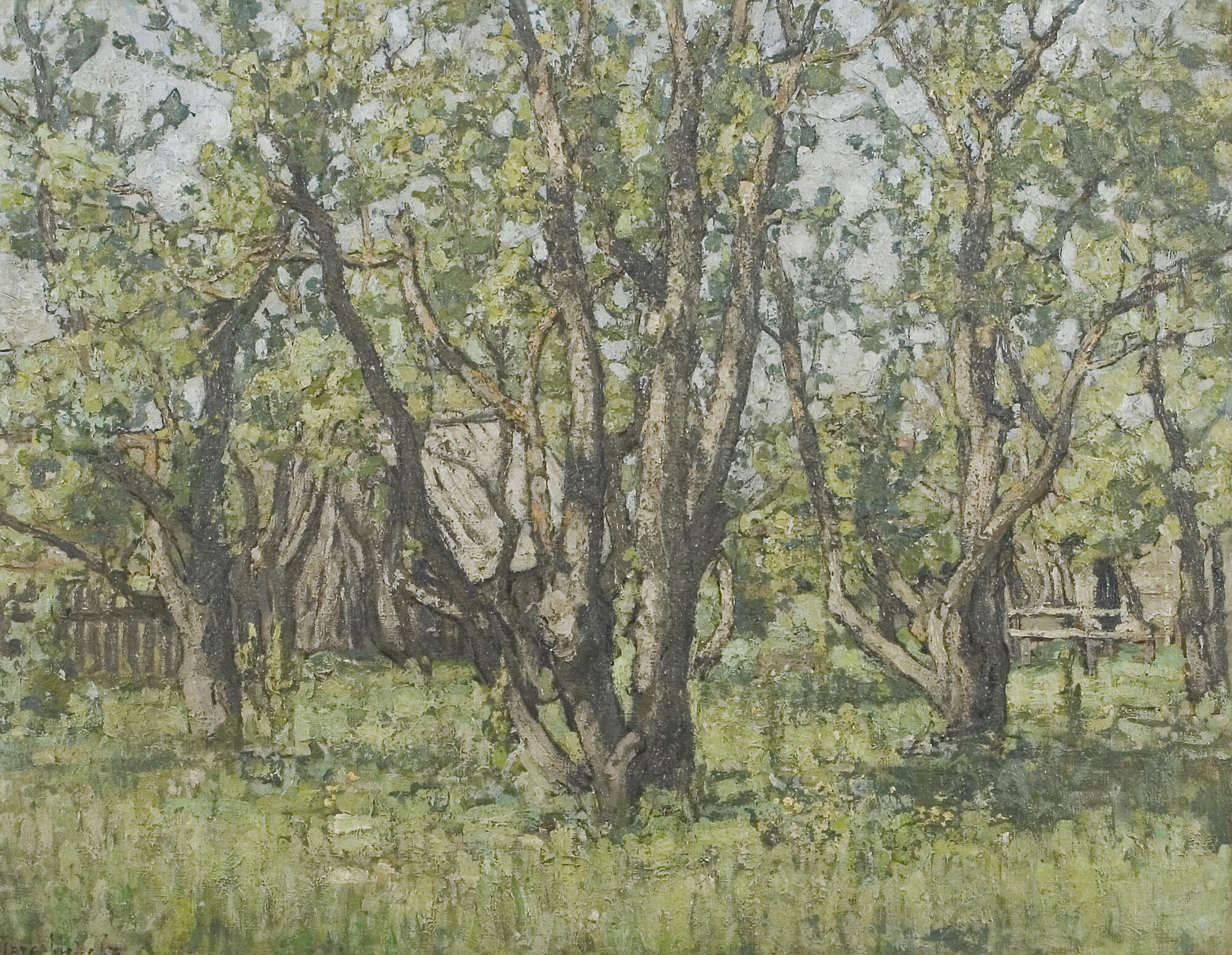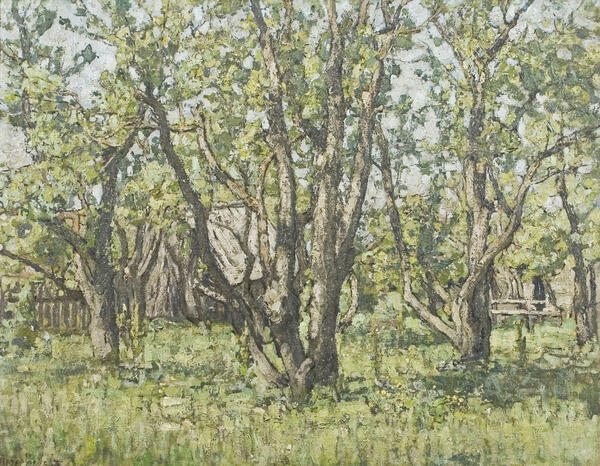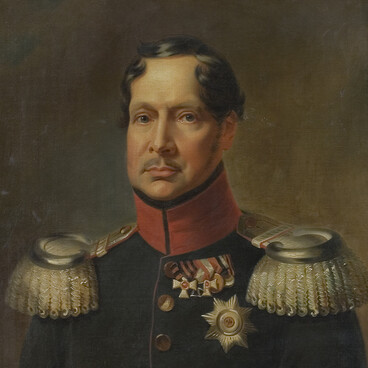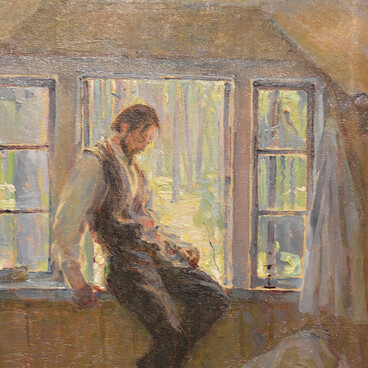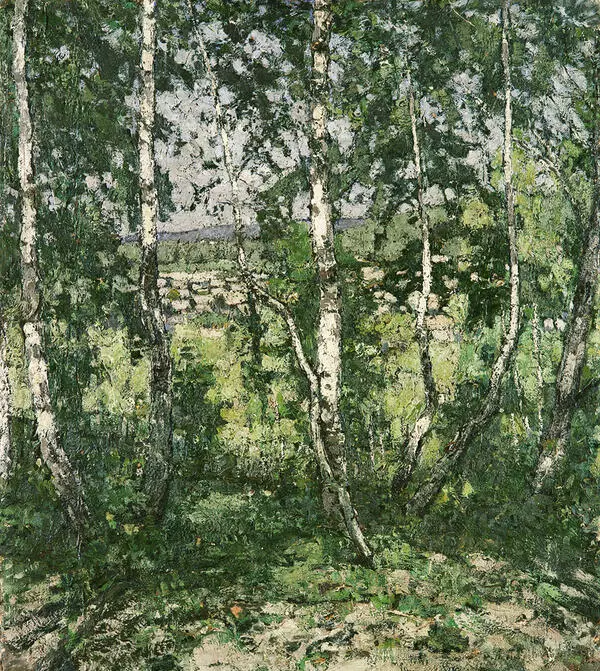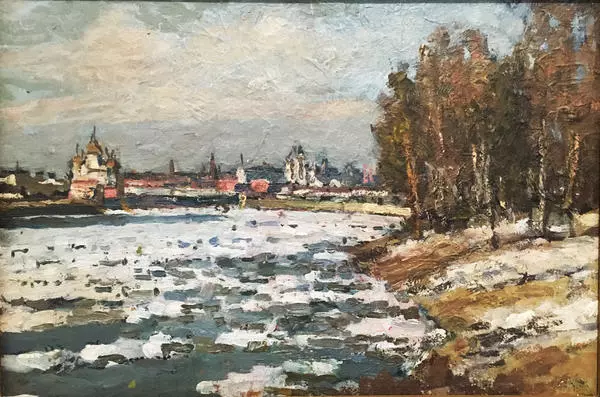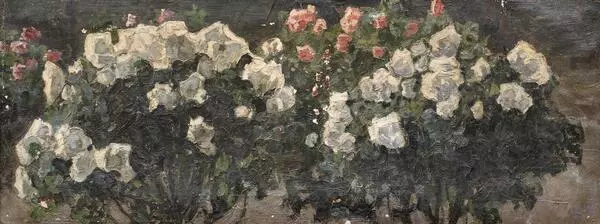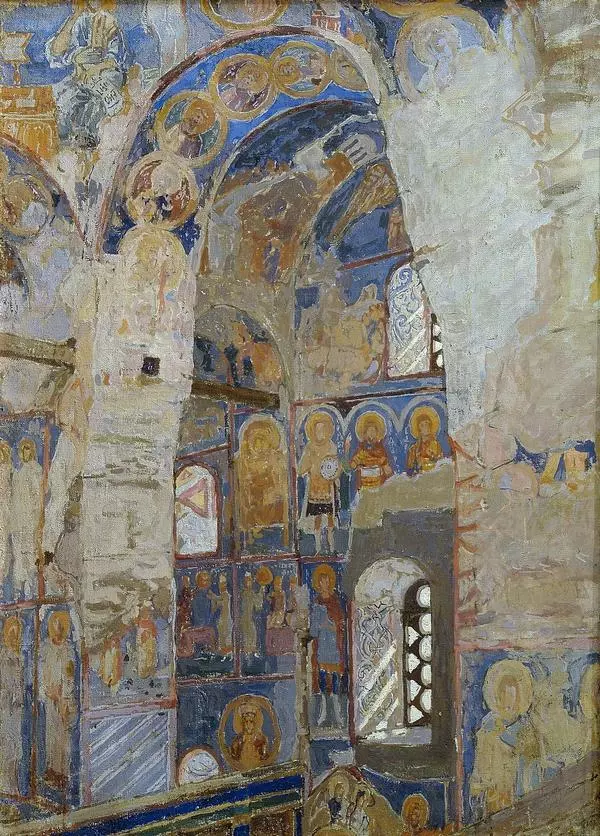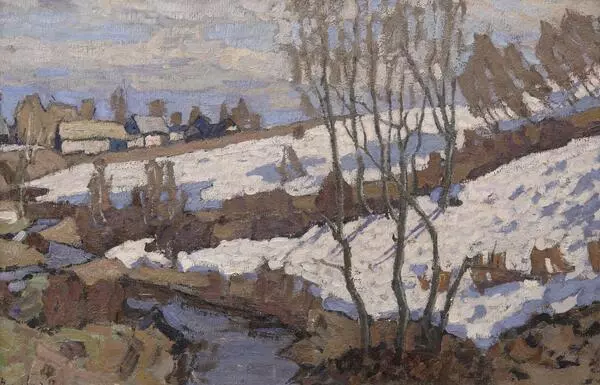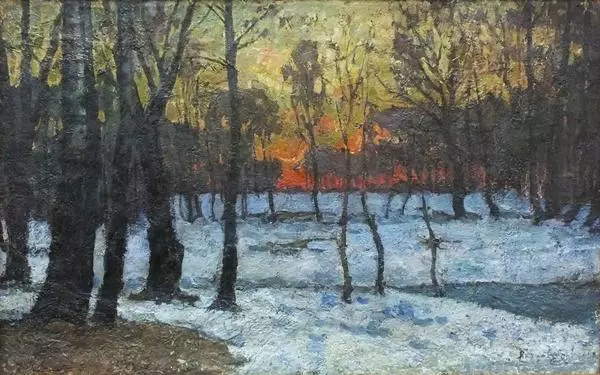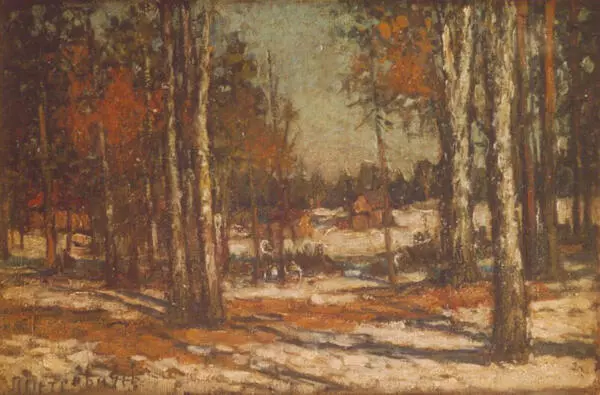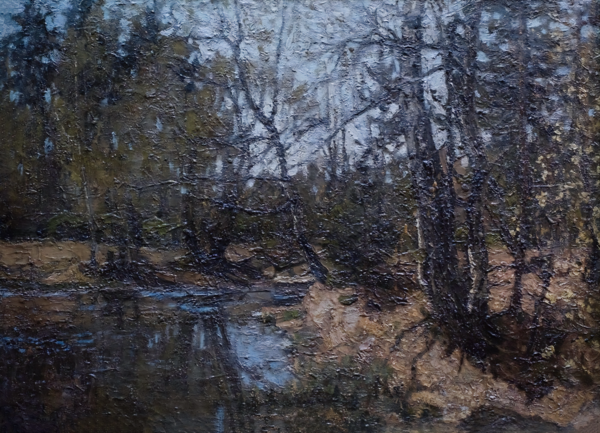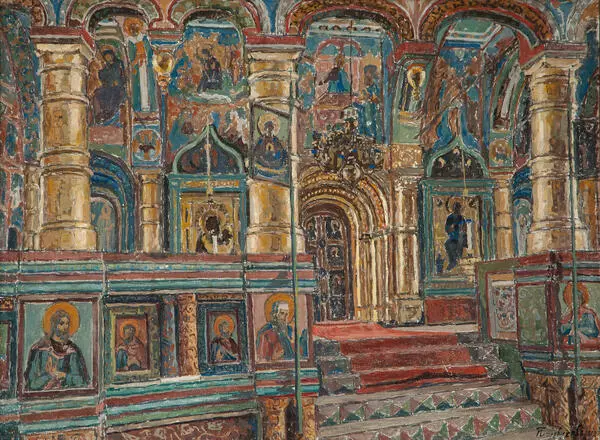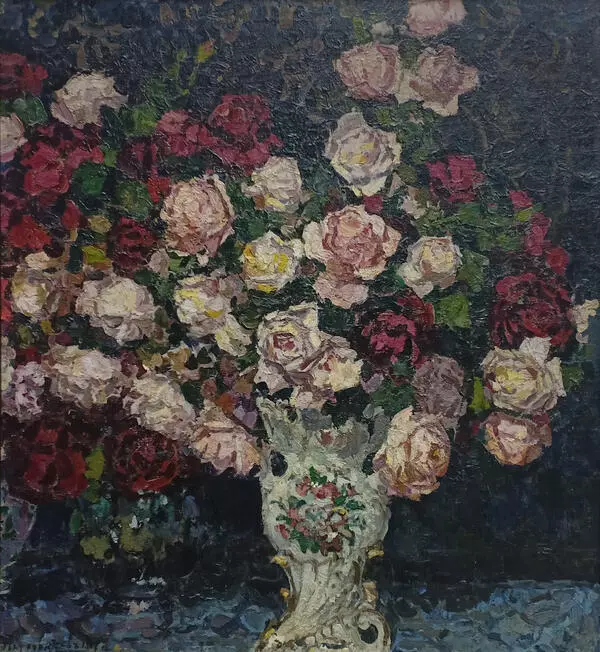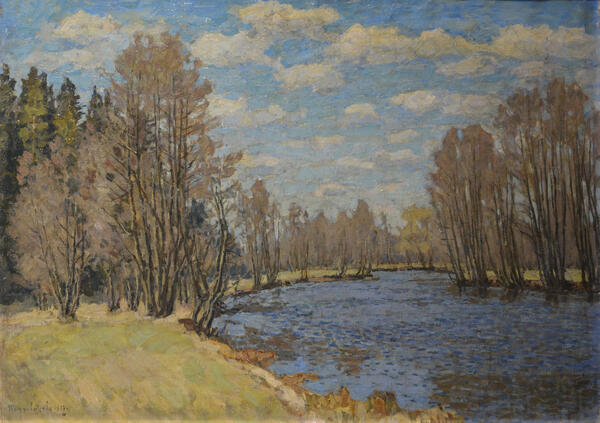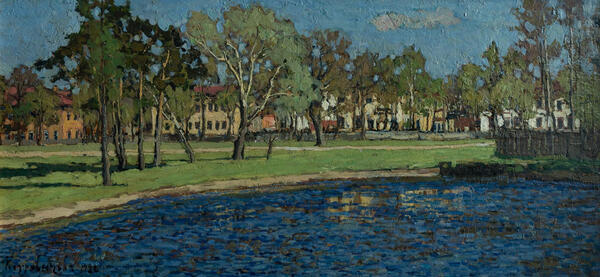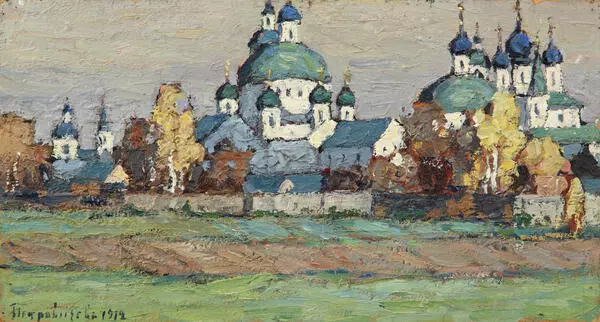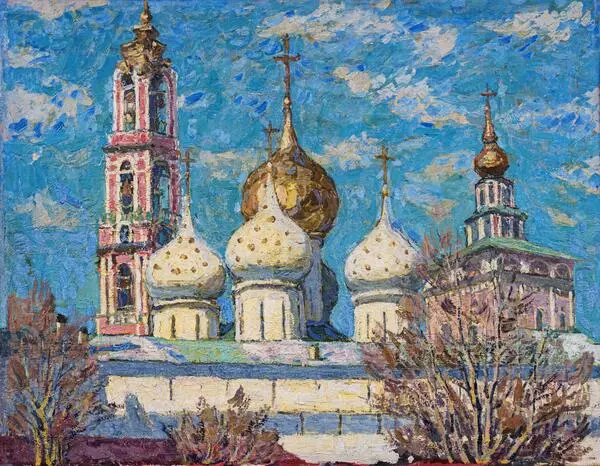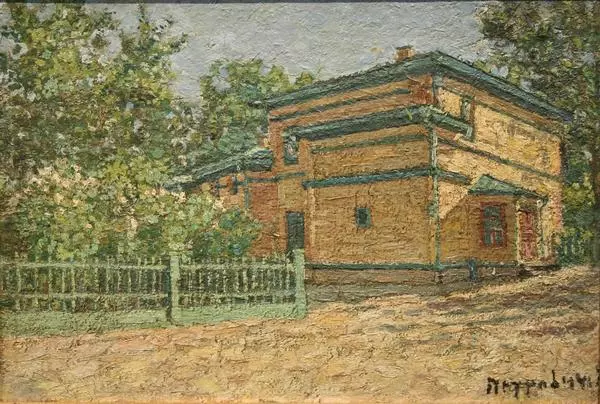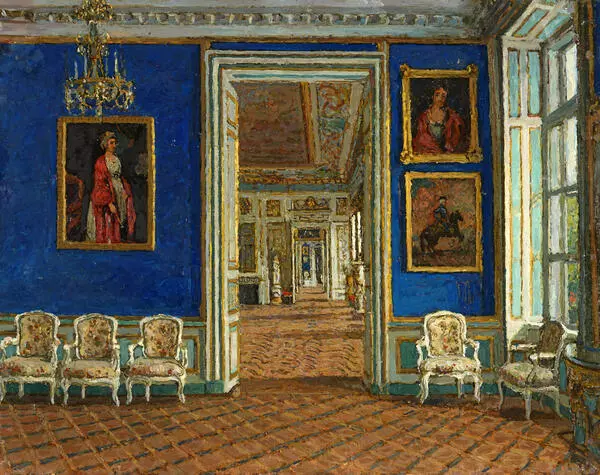Petr Ivanovich Petrovichev was a painter and teacher. He was born near Rostov. In 1892, he entered the painting department at the Moscow School of Painting, Sculpture and Architecture. Petr Petrovichev studied under the tutorship of Isaac Levitan, who became for him not only a teacher in art, but also a good adviser in life. After Levitan’s death, the artist continued his studies under Valentin Serov.
The peculiarity of Petrovichev’s painting is that he did not work with color, but instead with paint — thick, viscous, superimposed, with abrupt brush strokes or extended layers. It seemed that the artist did not paint, but sculpted a rough, physically tangible form. Thick material painting, in a way, unites the depicted objects: they appear to have originated from one single phenomena.
In his landscapes, Petrovichev followed Levitan’s tradition, but in his individual style. His works are imbued with the affirmation of the poetic beauty of his native nature. Due to his broad manner of painting with dense brush strokes and a somewhat muted “twilight” color palette, the paintings are distinguished by a degree of severity, but at the same time they are always recognizable. Such is the landscape “Withered Garden”. The canvas is characterized by great restraint in the color scheme, which is typical of Petrovichev’s landscapes. He loved natural earthen paints, which he prepared himself.
The work is painted on an almost unprimed canvas, and the viewer can see its texture, on top of which Petrovichev literally sculpts tree trunks and curved branches with a palette knife and a rough brush with stiff bristles. In the lower part of the picture, he sketches the foreground with short strong brush strokes directed from top to bottom. In the upper part of the landscape, the brush strokes are dynamic and rounded. With the apparent simplicity of the composition, such a technique and Petrovichev’s artistic manner not only convey the depth of space, but create an illusion of the fluidity of the textured pictorial layers that change depending on the lighting. When the composition is built on the most complex gradation of shades and the viewer surrenders with pleasure to a calm mood, which seems to be spilled onto the canvas, correctly chosen tonal combinations create a special feeling in one’s soul, which was quite characteristic of the landscape art of the Russian school of painting at the turn of the 20th century.
The peculiarity of Petrovichev’s painting is that he did not work with color, but instead with paint — thick, viscous, superimposed, with abrupt brush strokes or extended layers. It seemed that the artist did not paint, but sculpted a rough, physically tangible form. Thick material painting, in a way, unites the depicted objects: they appear to have originated from one single phenomena.
In his landscapes, Petrovichev followed Levitan’s tradition, but in his individual style. His works are imbued with the affirmation of the poetic beauty of his native nature. Due to his broad manner of painting with dense brush strokes and a somewhat muted “twilight” color palette, the paintings are distinguished by a degree of severity, but at the same time they are always recognizable. Such is the landscape “Withered Garden”. The canvas is characterized by great restraint in the color scheme, which is typical of Petrovichev’s landscapes. He loved natural earthen paints, which he prepared himself.
The work is painted on an almost unprimed canvas, and the viewer can see its texture, on top of which Petrovichev literally sculpts tree trunks and curved branches with a palette knife and a rough brush with stiff bristles. In the lower part of the picture, he sketches the foreground with short strong brush strokes directed from top to bottom. In the upper part of the landscape, the brush strokes are dynamic and rounded. With the apparent simplicity of the composition, such a technique and Petrovichev’s artistic manner not only convey the depth of space, but create an illusion of the fluidity of the textured pictorial layers that change depending on the lighting. When the composition is built on the most complex gradation of shades and the viewer surrenders with pleasure to a calm mood, which seems to be spilled onto the canvas, correctly chosen tonal combinations create a special feeling in one’s soul, which was quite characteristic of the landscape art of the Russian school of painting at the turn of the 20th century.
